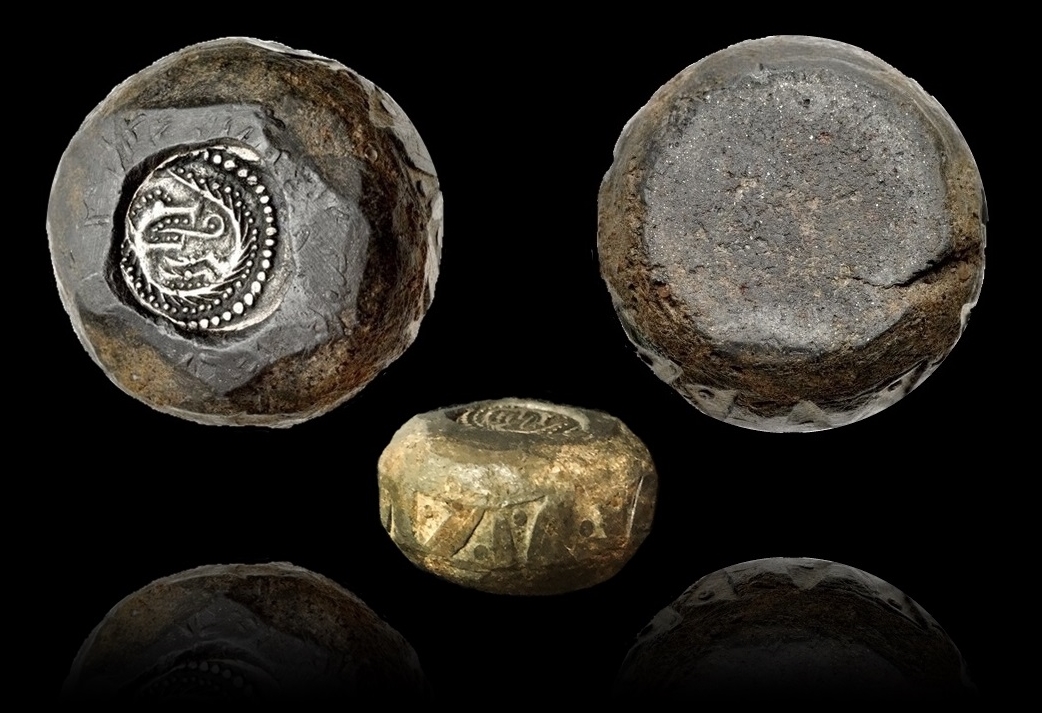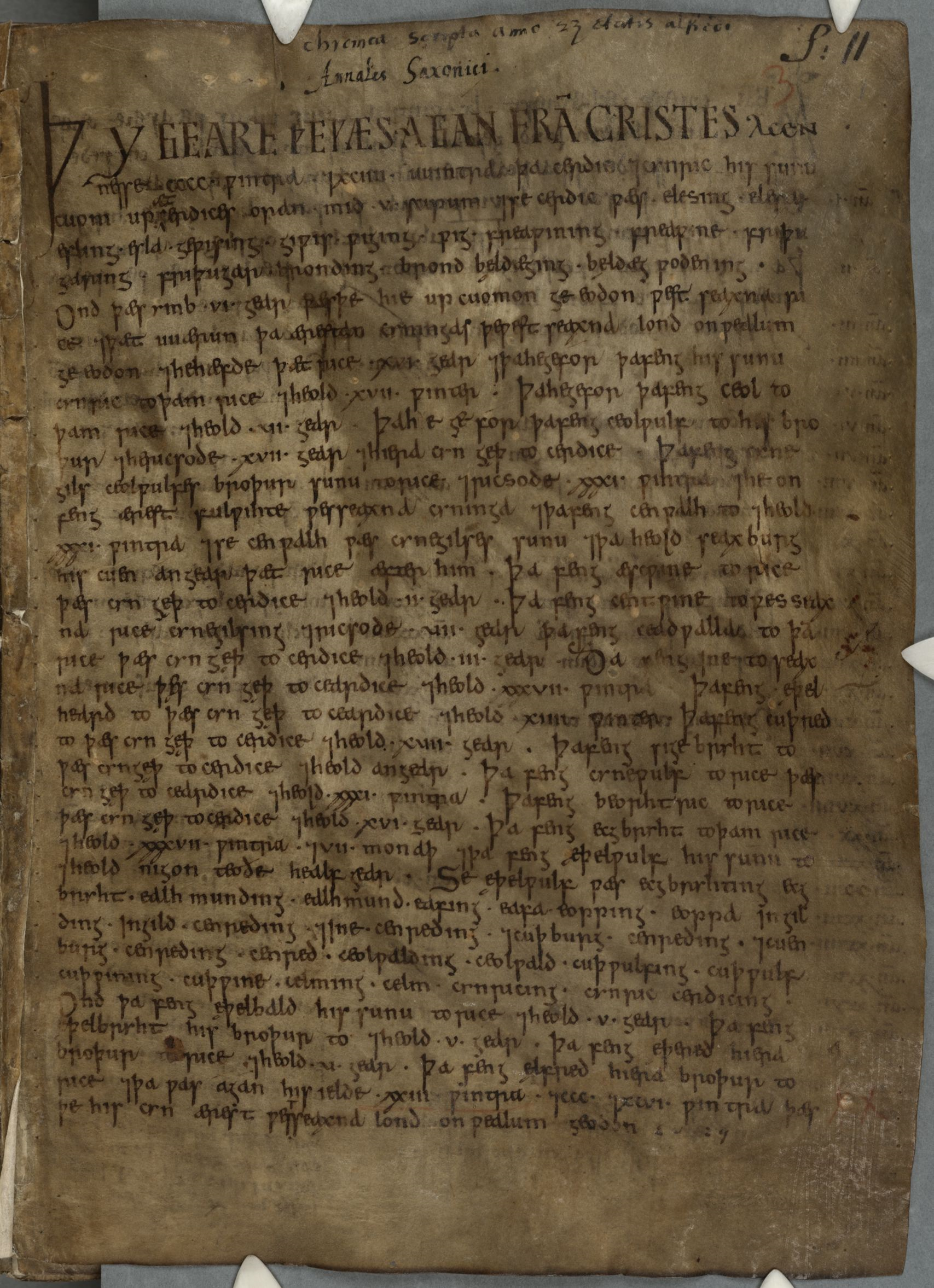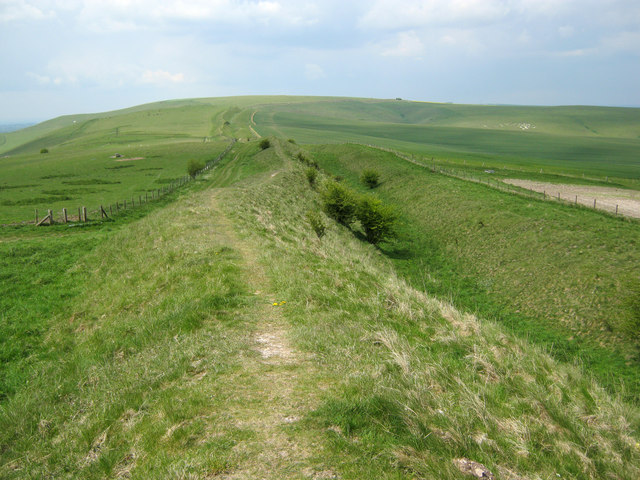|
Battle Of Woden's Burg (715)
The ''Anglo-Saxon Chronicle'' records a battle fought in the year 715 at Woden's Burg, the Neolithic long barrow now known as Adam's Grave, near Marlborough, Wiltshire. The entry states: "Her Ine 7 Ceolred fuhton æt Woddes beorge." (There Ine and Ceolred fought at Woden's hill.) Ine was king of Anglo-Saxon Wessex and Ceolred was king of Anglo-Saxon Mercia Mercia (, was one of the principal kingdoms founded at the end of Sub-Roman Britain; the area was settled by Anglo-Saxons in an era called the Heptarchy. It was centred on the River Trent and its tributaries, in a region now known as the Midlan .... The identity of the opposing force is not recorded.From the phrasing of the entry, using ''7'' rather than ''wiþ'', it is unlikely Ine and Ceolred fought against one another. The ''Anglo-Saxon Chronicle'' also records an earlier battle on the same site. The area was of strategic importance since it lay near the intersection of the ancient Ridgeway with Wansdyke. Referenc ... [...More Info...] [...Related Items...] OR: [Wikipedia] [Google] [Baidu] |
Adam's Grave
Adam's Grave was a Neolithic British Isles, Neolithic long barrow near Alton Barnes in Wiltshire, southwest England. Its remains have been scheduled as an ancient monument. The barrow is considered to be of the Severn-Cotswold tomb type. These generally consist of long, precisely built trapezoidal earth mounds covering burial chambers, thus they are a type of chambered long barrow. The chamber, made of Sarsen, sarsen stones, contained partial human skeletons. An arrowhead was also recovered. There is a breast-shaped hill on the spot, with the remains of the barrow being long and around high with ditches on either side. It was partially excavated by John Thurnam in 1860. The area around Adam's Grave has a high density of long barrows and is important because of its archaeological potential. The arrangement of stones around the site suggests there was once a kerb or forecourt. They are known as 'Old Adam' and 'Little Eve' and are near the original entrance to the barrow. Accordin ... [...More Info...] [...Related Items...] OR: [Wikipedia] [Google] [Baidu] |
Wiltshire
Wiltshire (; abbreviated to Wilts) is a ceremonial county in South West England. It borders Gloucestershire to the north, Oxfordshire to the north-east, Berkshire to the east, Hampshire to the south-east, Dorset to the south, and Somerset to the west. The largest settlement is Swindon, and Trowbridge is the county town. The county has an area of and a population of 720,060. The county is mostly rural, and the centre and south-west are sparsely populated. After Swindon (183,638), the largest settlements are the city of Salisbury (41,820) and the towns of Chippenham (37,548) and Trowbridge (37,169). For local government purposes, the county comprises two unitary authority areas: Swindon and Wiltshire. Undulating chalk downlands characterize much of the county. In the east are Marlborough Downs, which contain Savernake Forest. To the south is the Vale of Pewsey, which separates the downs from Salisbury Plain in the centre of the county. The south-west is also downland, ... [...More Info...] [...Related Items...] OR: [Wikipedia] [Google] [Baidu] |
Wessex
The Kingdom of the West Saxons, also known as the Kingdom of Wessex, was an Anglo-Saxon Heptarchy, kingdom in the south of Great Britain, from around 519 until Alfred the Great declared himself as King of the Anglo-Saxons in 886. The Anglo-Saxons believed that Wessex was founded by Cerdic and Cynric of the Gewisse, though this is considered by some to be a legend. The two main sources for the history of Wessex are the West Saxon Genealogical Regnal List and the ''Anglo-Saxon Chronicle'' (the latter of which drew on and adapted an early version of the List), which sometimes conflict. Wessex became a Christianity, Christian kingdom after Cenwalh () was baptised and was expanded under his rule. Cædwalla later conquered Kingdom of Sussex, Sussex, Kingdom of Kent, Kent and the Isle of Wight. His successor, Ine of Wessex, Ine (), issued one of the oldest surviving English law codes and established a second West Saxon bishopric. The throne subsequently passed to a series of kings wit ... [...More Info...] [...Related Items...] OR: [Wikipedia] [Google] [Baidu] |
Anglo-Saxon Chronicle
The ''Anglo-Saxon Chronicle'' is a collection of annals in Old English, chronicling the history of the Anglo-Saxons. The original manuscript of the ''Chronicle'' was created late in the ninth century, probably in Wessex, during the reign of King Alfred the Great (r. 871–899). Its content, which incorporated sources now otherwise lost dating from as early as the seventh century, is known as the "Common Stock" of the ''Chronicle''.Hunter Blair, ''Roman Britain'', p. 11. Multiple copies were made of that one original and then distributed to monasteries across England, where they were updated, partly independently. These manuscripts collectively are known as the ''Anglo-Saxon Chronicle''. Almost all of the material in the ''Chronicle'' is in the form of annals, by year; the earliest is dated at 60 BC (the annals' date for Julius Caesar's invasions of Britain). In one case, the ''Chronicle'' was still being actively updated in 1154. Nine manuscripts of the ''Chronicle'', none of ... [...More Info...] [...Related Items...] OR: [Wikipedia] [Google] [Baidu] |
Long Barrow
Long barrows are a style of monument constructed across Western Europe in the fifth and fourth millennia BCE, during the Early Neolithic period. Typically constructed from earth and either timber or stone, those using the latter material represent the oldest widespread tradition of stone construction in the world. Around 40,000 long barrows survive today. The structures have a long earthen tumulus, or "barrow", that is flanked on two sides with linear ditches. These typically stretch for between 20 and 70 metres in length, although some exceptional examples are either longer or shorter than this. Some examples have a timber or stone chamber in one end of the tumulus. These monuments often contained human remains interred within their chambers, and as a result, are often interpreted as tombs, although there are some examples where this appears not to be the case. The choice of timber or stone may have arisen from the availability of local materials rather than cultural difference ... [...More Info...] [...Related Items...] OR: [Wikipedia] [Google] [Baidu] |
Marlborough, Wiltshire
Marlborough ( , ) is a market town and Civil parishes in England, civil parish in the England, English Counties of England, county of Wiltshire on the A4 road (England), Old Bath Road, the old main road from London to Bath, Somerset, Bath. The town is on the River Kennet, 24 miles (39 km) north of Salisbury and 10 miles (16 km) southeast of Swindon. History The earliest sign of human habitation is the Marlborough Mound, a prehistoric tumulus in the grounds of Marlborough College. Recent radiocarbon dating has found it to date from about 2400 BC. It is of similar age to the larger Silbury Hill about west of the town. Legend has it that the Mound is the burial site of Merlin (wizard), Merlin and that the name of the town comes from Merlin's Tumulus, Barrow. More plausibly, the town's name possibly derives from the medieval term for chalky ground "marl"—thus, "town on chalk". However more recent research, from geographer John Everett-Heath, identifies the original O ... [...More Info...] [...Related Items...] OR: [Wikipedia] [Google] [Baidu] |
Ine Of Wessex
Ine or Ini (died in or after 726) was King of Wessex from 689 to 726. At Ine's accession, his kingdom dominated much of what is now southern England. However, he was unable to retain the territorial gains of his predecessor, Cædwalla of Wessex, who had expanded West Saxon territory substantially. By the end of Ine's reign, the kingdoms of Kent, Sussex, and Essex were no longer under West Saxon sway; however, Ine maintained control of what is now Hampshire, and consolidated and extended Wessex's territory in the western peninsula. Ine is noted for his code of laws (''Ines asetnessa'' or "laws of Ine"), which he issued in about 694. These laws were the first issued by an Anglo-Saxon king outside Kent. They shed much light on the history of Anglo-Saxon society, and reveal Ine's Christian convictions. Trade increased significantly during Ine's reign, with the town of Hamwic (now Southampton) becoming prominent. It was probably during Ine's reign that the West Saxons began to mint ... [...More Info...] [...Related Items...] OR: [Wikipedia] [Google] [Baidu] |
Ceolred Of Mercia
Ceolred (died 716) was king of Mercia from 709 to 716. Mercia at the end of the 7th century By the end of the 7th century, England was almost entirely divided into kingdoms ruled by the Anglo-Saxons, who had come to Britain two hundred years earlier. The kingdom of Mercia occupied what is now the English Midlands, Yorke, "The Origins of Mercia" in Brown & Farr, ''Mercia'', pp. 15–16. bordered by Northumbria to the north, East Anglia to the east, and Wessex, the kingdom of the West Saxons, to the south. Essex, the kingdom of the East Saxons, included London and lay between East Anglia and the kingdom of Kent.Yorke, ''Kings and Kingdoms''. The main source for this period is Bede's ''Historia ecclesiastica gentis Anglorum'' (Ecclesiastical History of the English People), completed in about 731. Despite its focus on the history of the church, this work provides valuable information about the early Anglo-Saxon kingdoms. Bede had informants who supplied him with details of ... [...More Info...] [...Related Items...] OR: [Wikipedia] [Google] [Baidu] |
Mercia
Mercia (, was one of the principal kingdoms founded at the end of Sub-Roman Britain; the area was settled by Anglo-Saxons in an era called the Heptarchy. It was centred on the River Trent and its tributaries, in a region now known as the Midlands of England. The royal court moved around the kingdom without a fixed capital city. Early in its existence Repton seems to have been the location of an important royal estate. According to the ''Anglo-Saxon Chronicle'', it was from Repton in 873–874 that the Great Heathen Army deposed the King of Mercia. Slightly earlier, Offa of Mercia, King Offa seems to have favoured Tamworth, Staffordshire, Tamworth. It was there where he was crowned and spent many a Christmas. For the three centuries between 600 and 900, known as Mercian Supremacy or the "Golden Age of Mercia", having annexed or gained submissions from five of the other six kingdoms of the Heptarchy (Kingdom of East Anglia, East Anglia, Kingdom of Essex, Essex, Kingdom of Kent, K ... [...More Info...] [...Related Items...] OR: [Wikipedia] [Google] [Baidu] |
Battle Of Woden's Burg (592)
The ''Anglo-Saxon Chronicle'' records a battle fought in the year 592 at Woden's Barrow (Old English "Wōdnesbeorġ"), the Neolithic long barrow now known as Adam's Grave, near Marlborough, Wiltshire. The year entry states: "Her micel wælfill wæs æt Woddes beorge, 7 Ceawlin wæs ut adrifen." (There was great slaughter at Woden's hill, and Ceawlin was driven out.) Ceawlin was king of Anglo-Saxon Wessex. In most versions of the ''Anglo-Saxon Chronicle'' the entry does not record the identity of the force opposing Ceawlin but one version, Manuscript E, says they were Britons British people or Britons, also known colloquially as Brits, are the citizens of the United Kingdom, the British Overseas Territories, and the Crown dependencies.: British nationality law governs modern British citizenship and nationality, w .... Yorke, however, says the opponent was Ceol, Ceawlin's nephew.Yorke, Barbara (1990). ''Kings and Kingdoms of Early Anglo-Saxon England.'' London: Seaby. . Ce ... [...More Info...] [...Related Items...] OR: [Wikipedia] [Google] [Baidu] |
The Ridgeway
The Ridgeway is a ridgeway or ancient trackway described as Britain's oldest road. The section clearly identified as an ancient trackway extends from Wiltshire along the chalk ridge of the Berkshire Downs to the River Thames at the Goring Gap, part of the Icknield Way which ran, not always on the ridge, from Salisbury Plain to East Anglia. The route was adapted and extended as a National Trail, created in 1972. The Ridgeway National Trail follows the ancient Ridgeway from Overton Hill, near Avebury, to Streatley, then follows footpaths and parts of the ancient Icknield Way through the Chiltern Hills to Ivinghoe Beacon in Buckinghamshire. The National Trail is long. History For at least 5,000 years travellers have used the Ridgeway. The Ridgeway provided a reliable trading route to the Dorset coast and to the Wash in Norfolk. The high dry ground made travel easy and provided a measure of protection by giving traders a commanding view, warning against potential attac ... [...More Info...] [...Related Items...] OR: [Wikipedia] [Google] [Baidu] |
Wansdyke (earthwork)
Wansdyke (from ''Woden's Dyke'') is a series of early medieval defensive linear earthworks in the West Country of England, consisting of a ditch and a running embankment from the ditch spoil, with the ditching facing north. There are two main parts: an eastern dyke that runs between Savernake Forest, West Woods and Morgan's Hill in Wiltshire, and a western dyke that runs from Monkton Combe to the ancient hill fort of Maes Knoll in historic Somerset. Between these two dykes, there is a middle section formed by the remains of the London-to-Bath Roman road. Usage Wansdyke consists of two sections, long with some gaps in between. East Wansdyke is an impressive linear earthwork, consisting of a ditch and bank running approximately east–west, between Savernake Forest and Morgan's Hill. West Wansdyke is also a linear earthwork, running from Monkton Combe south of Bath to Maes Knoll south of Bristol, but less substantial than its eastern counterpart. The middle section, long, ... [...More Info...] [...Related Items...] OR: [Wikipedia] [Google] [Baidu] |







